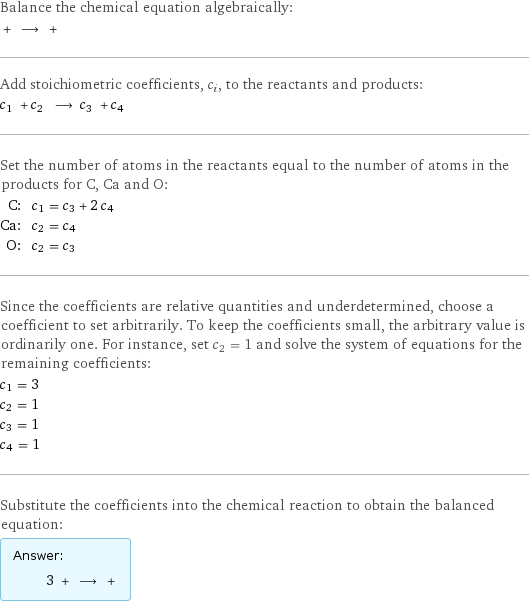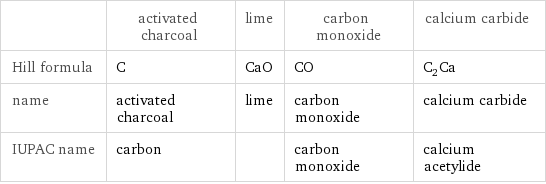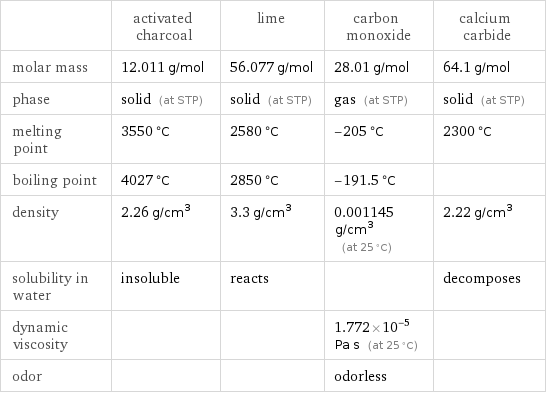Input interpretation

activated charcoal + lime ⟶ carbon monoxide + calcium carbide
Balanced equation

Balance the chemical equation algebraically: + ⟶ + Add stoichiometric coefficients, c_i, to the reactants and products: c_1 + c_2 ⟶ c_3 + c_4 Set the number of atoms in the reactants equal to the number of atoms in the products for C, Ca and O: C: | c_1 = c_3 + 2 c_4 Ca: | c_2 = c_4 O: | c_2 = c_3 Since the coefficients are relative quantities and underdetermined, choose a coefficient to set arbitrarily. To keep the coefficients small, the arbitrary value is ordinarily one. For instance, set c_2 = 1 and solve the system of equations for the remaining coefficients: c_1 = 3 c_2 = 1 c_3 = 1 c_4 = 1 Substitute the coefficients into the chemical reaction to obtain the balanced equation: Answer: | | 3 + ⟶ +
Structures

+ ⟶ +
Names

activated charcoal + lime ⟶ carbon monoxide + calcium carbide
Chemical names and formulas

| activated charcoal | lime | carbon monoxide | calcium carbide Hill formula | C | CaO | CO | C_2Ca name | activated charcoal | lime | carbon monoxide | calcium carbide IUPAC name | carbon | | carbon monoxide | calcium acetylide
Substance properties

| activated charcoal | lime | carbon monoxide | calcium carbide molar mass | 12.011 g/mol | 56.077 g/mol | 28.01 g/mol | 64.1 g/mol phase | solid (at STP) | solid (at STP) | gas (at STP) | solid (at STP) melting point | 3550 °C | 2580 °C | -205 °C | 2300 °C boiling point | 4027 °C | 2850 °C | -191.5 °C | density | 2.26 g/cm^3 | 3.3 g/cm^3 | 0.001145 g/cm^3 (at 25 °C) | 2.22 g/cm^3 solubility in water | insoluble | reacts | | decomposes dynamic viscosity | | | 1.772×10^-5 Pa s (at 25 °C) | odor | | | odorless |
Units
